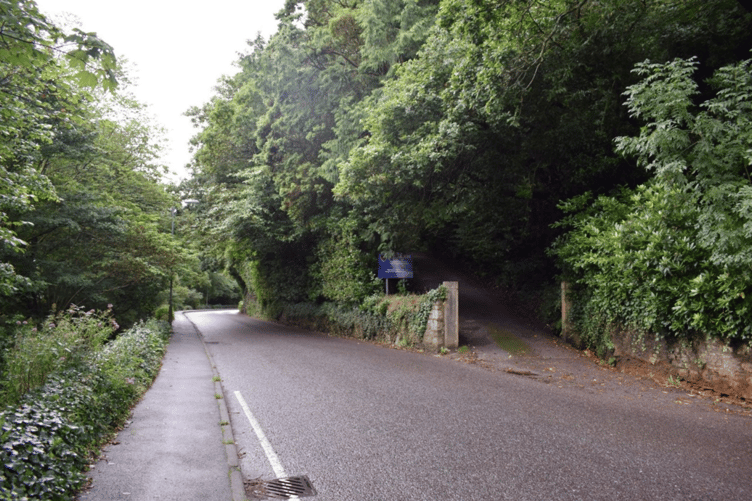EACH week, hundreds of planning applications come before Cornwall Council’s planning department, seeking to win approval for various plans right across the Duchy.
These plans can comprise of a number of different reasonings– ranging from permission to replace windows or listed building consent ranging up to large house building developments or changing of use of a building, for instance, from an office to a café, or flats.
Within this large and often complex system, there are a number of formats from which planning advice and approval can be sought.
These range from full applications where all the details which comprise a proposed development or work to a building are submitted, to outline applications, where further details are yet to be confirmed, for example, an outline application with reserved matters for appearance may not confirm the final proposed development but rather seek permission in principle.
An example of this is one for an outline permission for 20 dwellings on land with reserved matters for appearance and scale; the reserved matters would require further permission later for their inclusion.
Other types of applications include pre-application advice requests, where would-be developers submit often outline proposals to a local authority to ascertain whether it is likely to gain support or not prior to submitting a planning application.
The vast majority of applications are decided by planning officers employed by a local authority under ‘delegated powers’, meaning they do so on behalf of their employer, however, some applications are ‘called in’ by local councillors to be discussed at an area’s strategic planning committee meeting, meaning the final decision rests with a committee of councillors.
Developers bid to reduce affordable housing payment withdrawn
A BID by the developer behind plans seeking the conversion of the former Roselyon School near St Blazey into accommodation to reduce the amount they have to pay towards an affordable housing contribution has been withdrawn.
It is part of plans approved by Cornwall Council to allow the demolition of the former school buildings and the erection of 22 new dwellings.
The developer sought to amend the modification to the section 106 agreement dated September 20 2022 in order to reduce the amount it would pay, arguing that to do so would make the development financially unsustainable.
Usually, a 30 per cent affordable housing requirement would be stipulated for a development similar to this, meaning that equivalent to 6.6 dwellings would have been allocated for affordable use.
However in certain circumstances, this can be replaced by a financial contribution, and in this instance, it would have required the developer to contribute £456,144 towards the provision of affordable housing elsewhere.
This includes a £43,692 to cover the costs of council resources to enable the affordable housing to be built on an alternative site.
While this had been paid, the remainder was to be paid after the occupation of certain dwellings during the building phase.
In this instance, it would have required £103,135 to be paid prior to the occupation of the sixth dwelling and 11th dwelling, and a further £206,271 prior to occupation of the 17th open market dwelling.
In a response prior to its withdrawal, an officer within Cornwall Council’s affordable housing team said: “The affordable housing team conditionally supported the original proposal subject to securing an off-site financial contribution of £456,144 towards the provision of affordable housing.
“This application now seeks to remove the contribution due to increased costs but is considered to be premature and lacking any robust evidence. As such, the affordable housing team do not support the proposal to reduce the contribution.”
They further outlined that in their view, the developer had not proved it would be financially unviable, adding: “The applicant has submitted a Financial Viability Appraisal (FVA) which seeks to demonstrate that the current planning obligations are not viable, and consequently proposes no contribution towards affordable housing. It should be noted that vacant building credit has already been applied to this scheme which saw a significant reduction in the affordable housing contribution from the full policy amount of £673,200 to the £456,144 which was secured in October 2022.”
Masonic hall could become homes
A masonic hall in Callington could become housing if a full planning application is submitted.
Loyal Victoria Lodge has submitted a pre-application advice enquiry to Cornwall Council seeking its advice on proposals to convert the building at 12 Tavistock Road, Callington into four two-bedroom flats.
JL Planning, the agents for the applicant said: “this pre-application offers to reuse the building to provide 4 new homes in a sustainable location. This would allow the Lodge to be relocated to a newer, more thermally efficient building. The intention here is not to lose the Lodge but to find a more suitable and sustainable building in the local area. The purpose of this pre-application is to seek the Council’s advice and to engage proactively with the authority. The aim being to submit a planning application which can be supported by officers.
“The pre-application seeks advice for the conversion of the hall into 4 x 2 bed flats. Details of the proposed development have been set out in the accompanying existing and proposed plans. In summary all the flats would comply with the national space standards. Minimal alterations are required to the building to facilitate the development, and this proposal maintains the building’s character and appearance.”
The proposal was summarised as: “The site of this proposal is the Masonic Hall on Tavistock Road in Callington. The hall is a large, imposing building that is set back from the roadside. The hall is surrounded by residential properties on all sides, bar the public highway to the north/north-west. The submitted covering letter identifies that the hall is a former chapel with the ground floor having had multiple informal uses in its history, with the current use of the ground floor being a second hand furniture shop.
“The covering letter states that the hall is expensive for the organisation to run due to its age and size. The Lodge aim to move to a newer and more thermally efficient hall within the local area. The Lodge are exploring the possibility of converting the hall into four 2-bedroom flats. There would be minimal alterations required to the building.”
In its reply to the applicant, Cornwall Council’s planning department said that changing the property to dwellings could be supported.
It, did however, advise that parking and highways might be a challenge, saying: “The issue of traffic generation from a new residential development would need to be considered. If you intend to progress the proposal with the submission of a formal planning application, in addition to indicating within the redline site plan area the means of access to the public highway, you would need to annotate the plans submitted to show space allocated for turning and parking, and to show that adequate visibility splays could be achieved from any new access point.
“An assessment of this aspect would be made at the time of the application. The details of surfacing and drainage of such areas should also be provided to accompany any application submitted.”
They concluded: “To conclude, the principle of this development is acceptable. The site is within the settlement of Callington, suitably reuses an existing building and has sustainable access to services and facilities. The submitted plans appear to show adequate internal space for four flats and there are minimal external alterations required. The scheme could gain officer support at full planning application stage.”
Keep up to date with the latest planning applications and other statutory notices (such as alcohol licensing and probates) that affect where you live by visiting our online Public Notice Portal – be the first to know by visiting www.publicnoticeportal.uk/cornish-times-series.





Comments
This article has no comments yet. Be the first to leave a comment.